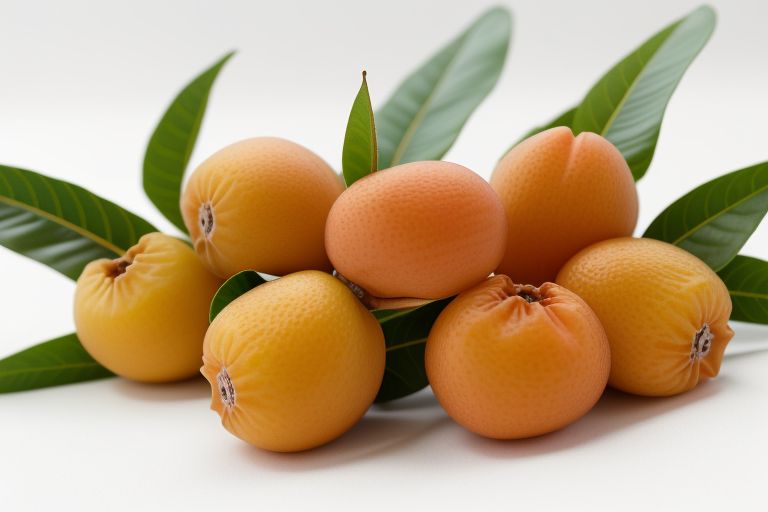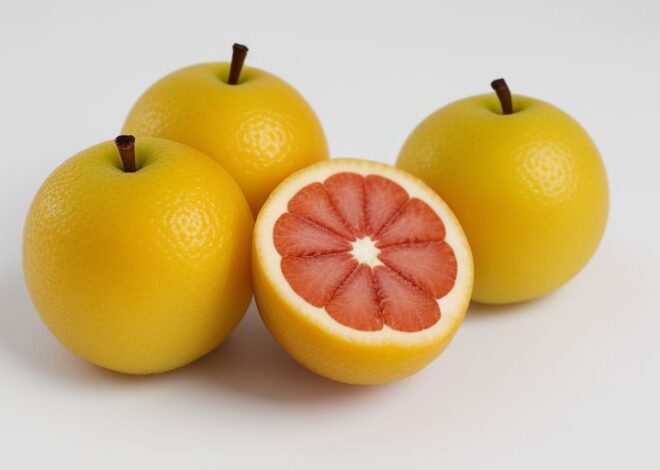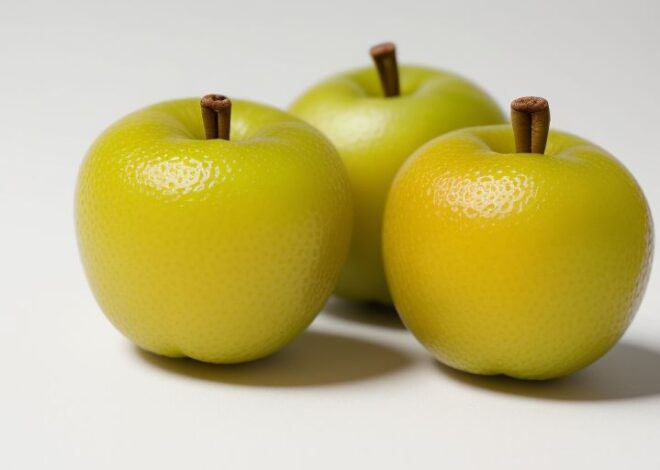
Loquat
Introduction
The loquat (Eriobotrya japonica) is an evergreen tree native to Asia, known for its sweet and juicy fruit. With a rich history and cultural significance, the loquat has been cultivated for over 2,000 years, earning the nickname “Golden Fruit of Prosperity.” This article delves into the world of loquats, exploring their etymology, description, taxonomy, cultivars, distribution, cultivation, production, uses, phytochemistry, flavor, toxicity, nutrition, and cultural significance.
Etymology
The name “loquat” is derived from the Cantonese Chinese word “lou gwat,” meaning “black orange.” The scientific name Eriobotrya japonica is a combination of the Greek words “erion” (wool) and “botrys” (cluster), referring to the fruit’s fuzzy exterior and clustered growth.
Description
The loquat tree grows up to 10 meters tall, with a broad, rounded crown and dark green, glossy leaves. The fragrant white flowers are clustered in panicles, followed by the golden-yellow fruit, which is oval-shaped and typically 4-6 cm long. The fruit has a thin, edible skin and juicy pulp surrounding 2-5 seeds.
Taxonomy and Cultivars
Loquats belong to the family Rosaceae and are closely related to apples and pears. There are several cultivars, including:
| Cultivar | Characteristics |
|---|---|
| ‘Advance’ | Large fruit, sweet and juicy |
| ‘Champagne’ | Sweet and slightly tart, with a hint of citrus |
| ‘Gold Nugget’ | Large, sweet fruit with a hint of vanilla |
| ‘Shirotae’ | White-fleshed, sweet and juicy |
Distribution and Habitat
Native to China, Japan, and Korea, loquats are now cultivated in many parts of the world, including the United States, Europe, and Australia. They thrive in subtropical and mild temperate regions with well-drained soil and full sun to partial shade.
Cultivation
Loquats are relatively low-maintenance trees, requiring regular watering, fertilization, and pruning. They can be propagated through seed or grafting and are often used as ornamental plants in landscapes and gardens.
Production and Uses
Loquats are primarily grown for their fruit, which is eaten fresh, used in jams and preserves, or made into a sweet, fragrant liqueur. The leaves and seeds have medicinal properties, and the wood is valued for furniture and crafts.
Phytochemistry
Loquats contain various bioactive compounds, including:
- Flavonoids (quercetin, kaempferol)
- Phenolic acids (gallic acid, ellagic acid)
- Terpenoids (ursolic acid, oleanolic acid)
- Amino acids (aspartic acid, glutamic acid)
Flavor
The flavor of loquats is sweet and slightly tart, with hints of citrus, vanilla, and honey.
Toxicity
The seeds and leaves of loquats contain toxic compounds, including amygdalin and cyanogenic glycosides, which can release cyanide when ingested. However, the fruit is safe to eat.
Nutrition
Loquats are a good source of:
- Vitamin A (beta-carotene)
- Vitamin C
- Potassium
- Fiber
- Antioxidants
Culture
In many Asian cultures, loquats are considered a symbol of good fortune, prosperity, and longevity. In Japan, they are associated with the New Year (Oshogatsu) and are often served at special occasions.
“The loquat is a symbol of the sweetness and prosperity that comes with the New Year.” – Japanese proverb
In China, loquats are believed to have healing properties and are used in traditional medicine.
“The loquat is a golden fruit that brings health and happiness to those who eat it.” – Chinese saying
Conclusion
The loquat is a fascinating fruit with a rich history, cultural significance, and numerous uses. From its sweet and juicy flavor to its medicinal properties and ornamental value, the loquat is a true treasure of the botanical world. As we continue to cultivate and appreciate this golden fruit, may we also honor its cultural heritage and the prosperity it brings.


